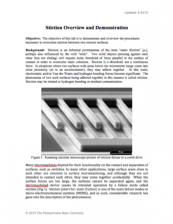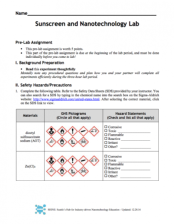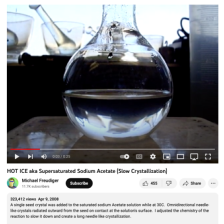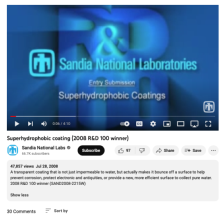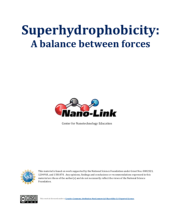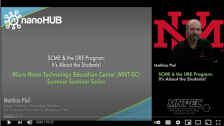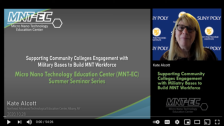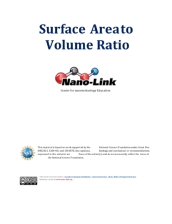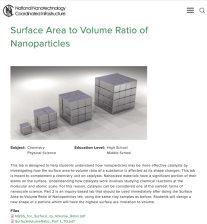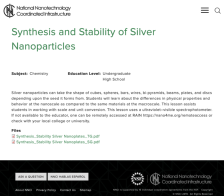Browse Resources
Resources |
|---|
This 5-page lab guide, created by the Nanotechnology Applications and Career Knowledge Center (NACK) at Pennsylvania State University, is for a laboratory activity that demonstrates "the procedures necessary to overcome stiction between two micron surfaces." Throughout the lab, students will be...
The Sunscreen and Nanotechnology Lab was created by SHINE: Seattle's Hub for Industry-driven Nanotechnology Education. "This lab consists of activities designed to teach students about nanotechnology applications in sunscreens." Lab resources include a 35-page lab manual and lab safety data sheets....
This short YouTube video, which runs for 0:26 was created by Dr. Michael Freudinger in 2008 to demonstrate the slow crystallization of super saturated sodium acetate. The description of the video provides an explanation for the reaction: "A single seed crystal was added to the saturated sodium...
This video discusses some of the work done with superhydrophobic technology at Sandia National Laboratories. This video demonstration is an excellent introduction to the technology and would be useful in facilitating classroom discussion. Running time for the video is 4:10.
Module Description:
This module was created by the Center for Nanotechnology Education (Nano-Link) and introduces students to superhydrophobicity. Science and nanoscience concepts covered during the module include molecular bonds, electron density concepts and molecular modeling, atomic and...
This video from the Micro Nano Technology Education Center (MNT-EC) is part of a series of seminars on micro nano technologies and issues in the field. In the video, Matthias Pleil, PI at the Support Center for Microsystems Education (SCME), talks about the recently funded Undergraduate Research...
This video from the Micro Nano Technology Education Center (MNT-EC) is part of a series of seminars on micro nano technologies and issues in the field. In the video, Kate Alcott discusses how community colleges can engage with active military service members at military bases to build the micro nano...
Module Description:
This module was created by the Center for Nanotechnology Education (Nano-Link) and introduces students to surface area to volume ratio concepts. "This simple activity conveys one of the most profound aspects of Nanoscience - that for a given volume of material the total...
Presented by the National Nanotechnology Coordinated Infrastructure, this two-part laboratory activity was designed to complement any chemistry unit on catalysts to "help students understand how nanoparticles may be more effective catalysts by investigating how the surface area-to-volume ratio of a...
This lab, presented by the National Nanotechnology Coordinated Infrastructure, uses silver nanoplates as a tool to explore the relationship between shape and optical properties. Students will be able to compare material properties and behaviors at both the nano- and macroscale through the exercise,...
|
| ← PreviousNext → |
